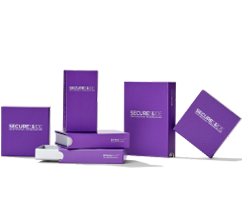
The Poison Prevention Packaging Act Broken Down
Families can stock up on effective, affordable household products and enjoy many modern conveniences. Personal hygiene items, powerful cleaning products, and life-changing medicines can all be found in the home.
But shutting a drawer or closing a cabinet door isn’t always enough to prevent young children from accessing these potentially dangerous products.
That’s why the U.S. government passed the Poison Prevention Packaging Act more than 50 years ago and why improved packaging methods have saved many lives since then. Let’s look closely at the PPPA and see what it entails, then talk about the best modern child-resistant packaging solutions you can utilize for your brand.
What Is the Poison Prevention Packaging Act?
The PPPA, also known as the Federal Hazardous Substances Act, was enacted in December of 1970 by President Richard Nixon and the 91st United States Congress.
The law requires child-resistant packaging for several categories of household substances. These items range from over-the-counter medicines to spray paints and turpentine (a type of solvent).
Leading up to the legislation, approximately 500 children died each year from accidentally ingesting harmful chemicals and medications in the home. Since the passing of the PPPA, that fatality rate was reduced by nearly 50% and that number continues to decline today.
The exact specifications for child-resistant packaging will vary depending on the product. Over the years, standards have been adjusted to meet new and changing product types.
But even 50 years later, the essence of the PPPA remains. Companies across the consumer packaged goods (CPG) landscape continues to advance their efforts with more effective solutions to help keep kids safe while offering attractive packaging designs.
What Industries Are Affected by the Poison Prevention Packaging Act?
The PPPA is fairly broad in its reach, impacting many different industries with its regulations. In general, any product intended for use in the home – consumable or otherwise – may be subject to the rules contained within the act.
Therefore, the majority of the CPG space is affected, particularly industries that produce items containing potentially dangerous ingredients.
Chemical and cosmetic industries are impacted most directly, since any product intended for household use will be required to meet strict packaging standards. Fewer products are subject to regulation in personal hygiene, although some mouthwash products may need special packaging.
Drugs and dietary supplements are another pair of industries under strict scrutiny, with child-resistant packaging a top priority for everyone in that space. Since medications can be dangerous when consumed in high doses, these companies must be vigilant regarding their packaging standards and child resistance methods.
Finally, household goods companies like those that make cleaning supplies and detergents must meet the standards in the PPPA.
The list of industries continues to expand with the legalization of cannabis and products like it, so newcomers in these businesses must be tuned into these packaging standards from square one, or face major penalties.
What Items Are Included in the Poison Prevention Packaging Act?
Although industries should be prepared to meet the requirements set forth by the PPPA, those rules don’t always apply to every product they create.
The PPPA is broken down into many subcategories that outline the exact products that need child-resistant packaging, including details down to precise chemical amounts. This requires that manufacturers know exactly how much of each substance is contained within a product, per the rules in the Code of Federal Regulations from the CPSC.
New rules may be added from time to time, and revisions to established rules are not uncommon, particularly in industries like cannabis and vape products which are under frequent review. It’s in companies’ best interest to stay in the loop with these changes and aim to be ahead of them when possible.
In the meantime, here’s a brief overview of what items are covered in the PPPA and the reason why they require child-resistant packaging.
Over-the-Counter Drugs
While most OTC drugs are safe with one or two doses, they pose a major threat to kids who don’t know these limitations. Furthermore, some pain-relieving drugs now come with a sweet coating, making them potentially more tempting to kids and even more dangerous if not properly protected.
Dietary supplements are another offshoot of this category, and the same level of protection must be applied. With supplements now available in attractive gummy shapes and flavors, child-resistant packaging is more important than ever.
Controlled Drugs
As certain controlled drugs become legalized, packaging strategies must be up to the task with child-resistant formats ready to deploy. Products like cannabis come in so many varieties, from flowers and oils to gummies, chocolates, and other formats reminiscent of candy.
These products must be packaged in a way that maintains the integrity of the product while also meeting standards for labeling, transparency, and high levels of child resistance. Not every packaging solution checks all these boxes, so look for the best in the business.
Prescription Drugs
Any product available only by prescription must be contained within a child-resistant package. This goes for pills, capsules, liquid medicines, sprays, gels, creams, and more.
The same rules apply to any drug that was previously only available by prescription, but may now be sold in over-the-counter form.
Iron-Containing Drugs
Since iron is toxic in high concentrations, any product containing iron must be sold in packaging that adheres to the PPPA. This goes for iron-specific supplements, in addition to multivitamins containing iron and other similar products.
For elemental iron, the concentration percentages are slightly higher for nonliquids than liquids.
Household Products
With so many items classifiable as “household products”, this category is too broad to list all possibilities. Everything from laundry and dishwashing detergents to surface cleaners, tile polishers, and other cleaning supplies can be included.
In addition, there is another world of paints, sealants, varnishes, and other supplies intended for household use, each containing dangerous chemicals. When producing any item with a chemical concentration, be sure to review the latest PPPA codes in full to see where your company, and your products, fit in.
What Is Child-Resistant Packaging?
Child-resistant packaging can look very different depending on the product and the intention of the manufacturer. However, the PPPA doesn’t list out what packaging needs to look like or how it functions.
Instead, the law simply states the testing requirements that must be met in order for a package to qualify as child-resistant. That test involves having children (around the age of 5) attempt to open a package in a set timeframe, and ensure they cannot break past the mechanism.
The package must also be reasonably accessible by adults, which involves striking a balance of difficulty and user experience. As a result, child-resistant packaging can entail anything from push-and-twist caps to exit bags with specialized press-and-release functions. These variations help keep products safe during shipping, while keeping kids safe at home.
When Is a Child-Resistant Package Not Required?
Although most products requiring child-resistant packaging are listed in the code of the PPPA, there are also many state laws that require child-resistant packaging for locally regulated industries – a highly prevalent practice with cannabis regulations.
There’s also the rare case that single-serving items are not required to meet PPPA standards, so long as they have specific labels that state they’re only for “households without young children.”
The Bottom Line
With standards like the PPPA, there’s no negotiating when it comes to child-resistant packaging. Be prepared to meet these regulations as they morph and evolve with time.
To stay ahead of these rules and keep your business in the game, be sure to work with a solutions provider like Dymapak that excels in the science of child-resistant packaging for attractive designs in custom sizes that offer the child-resistance your product requires.
Sources:
Iron Poisoning | Poison Control
Poison Prevention Packaging Act | CPSC
7 Safety Tips for Child Resistant Packaging | Mom News Daily


